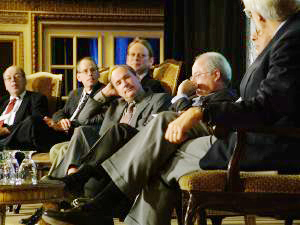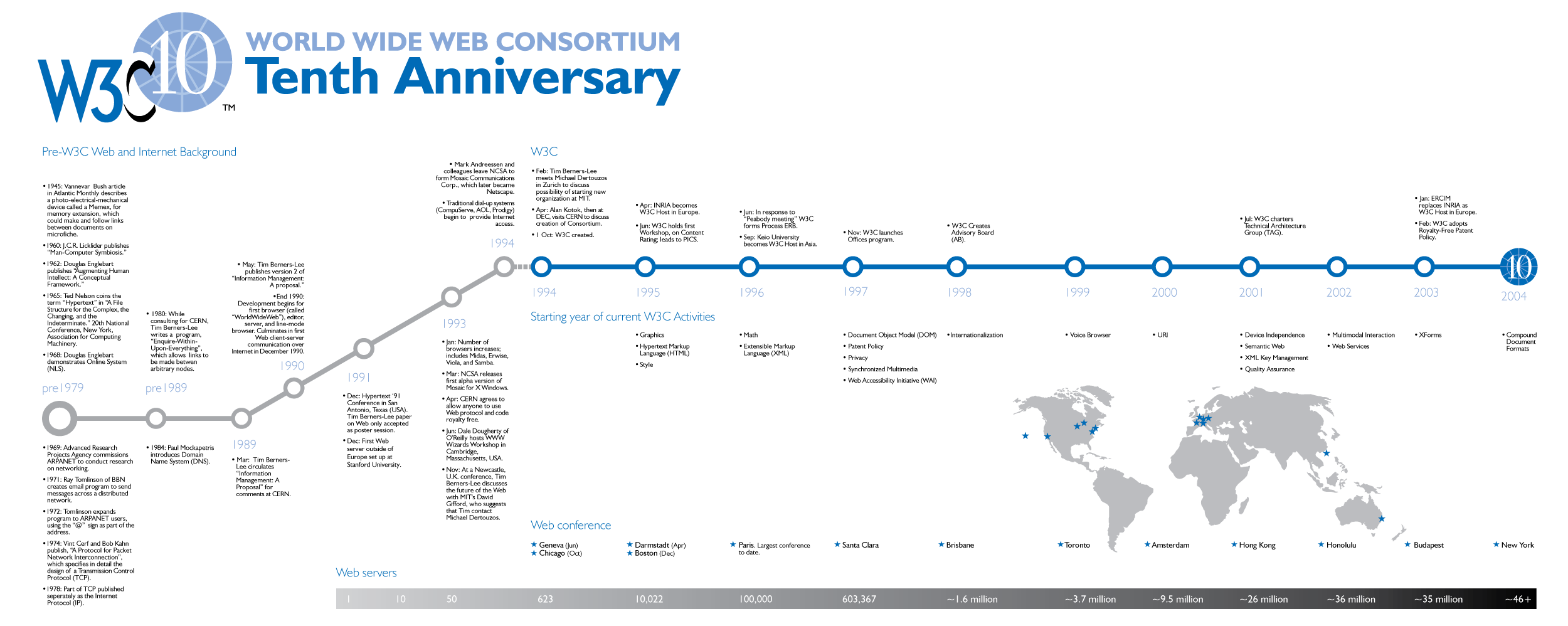History
In 1989, Sir Tim Berners-Lee invented the World Wide Web (see the original proposal). He coined the term "World Wide Web," wrote the first World Wide Web server, "httpd," and the first client program (a browser and editor), "WorldWideWeb," in October 1990.
He wrote the first version of the "HyperText Markup Language" (HTML), the document formatting language with the capability for hypertext links that became the primary publishing format for the Web. His initial specifications for URIs, HTTP, and HTML were refined and discussed in larger circles as Web technology spread.

W3C10 panel recounts early Web history.
A Consortium for the World Wide Web
In 1994, the decision to form the World Wide Web Consortium came at the urging of many companies investing increasing resources into the web. Sir Tim Berners-Lee started leading the essential work of the Web Consortium team to foster a consistent architecture accommodating the rapid pace of progress in web standards for building websites, browsers, devices to experience all that the web has to offer.
In founding the World Wide Web Consortium, Sir Tim Berners-Lee created a community of peers. Web technologies were already moving so quickly that it was critical to assemble a single organization to coordinate web standards. Tim accepted the offer from MIT, who had experience with consortia, to host W3C. He required from the start that W3C have a global footprint.
The Hosted model (1994-2022)
In October 1994, Sir Tim Berners-Lee founded the World Wide Web Consortium (W3C) at the Massachusetts Institute of Technology, Laboratory for Computer Science [MIT/LCS] in collaboration with CERN, where the Web originated (see information on the original CERN Server), with support from DARPA and the European Commission.
In April 1995, Inria (Institut National de Recherche en Informatique et Automatique) became the first European W3C host, followed by Keio University of Japan (Shonan Fujisawa Campus) in Asia in 1996. In 2003, ERCIM (European Research Consortium in Informatics and Mathematics) took over the role of European W3C Host from INRIA. In 2013, W3C announced Beihang University as the fourth Host.
The four partnered administratively in a Hosted model to manage W3C Members and provide employment of the global W3C staff working under the direction of W3C’s management.

W3C10 Time Line Graphic
(other formats and description)
Public-interest non-profit organization
The World Wide Web Consortium began the year 2023 by forming a new public-interest non-profit organization.
The new mission-driven entity preserves our member-oriented approach, existing worldwide outreach and cooperation while allowing for additional partners around the world beyond Europe and Asia. The new organization also preserves the core process and mission of the Consortium to shepherd the web, by developing open web standards as a single global organization with contributions from W3C Members, staff, and the international community.
"Today I am proud of the profound impact W3C has had, its many achievements accomplished with our Members and the public, and I look forward to the continued empowering enhancements W3C enables as it launches its own public-interest non-profit organization, building on 28 years of experience."
Sir Tim Berners-Lee, Web Inventor and Founder of W3C, 31 January 2023